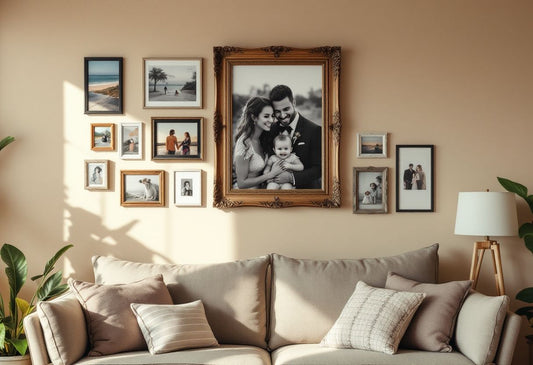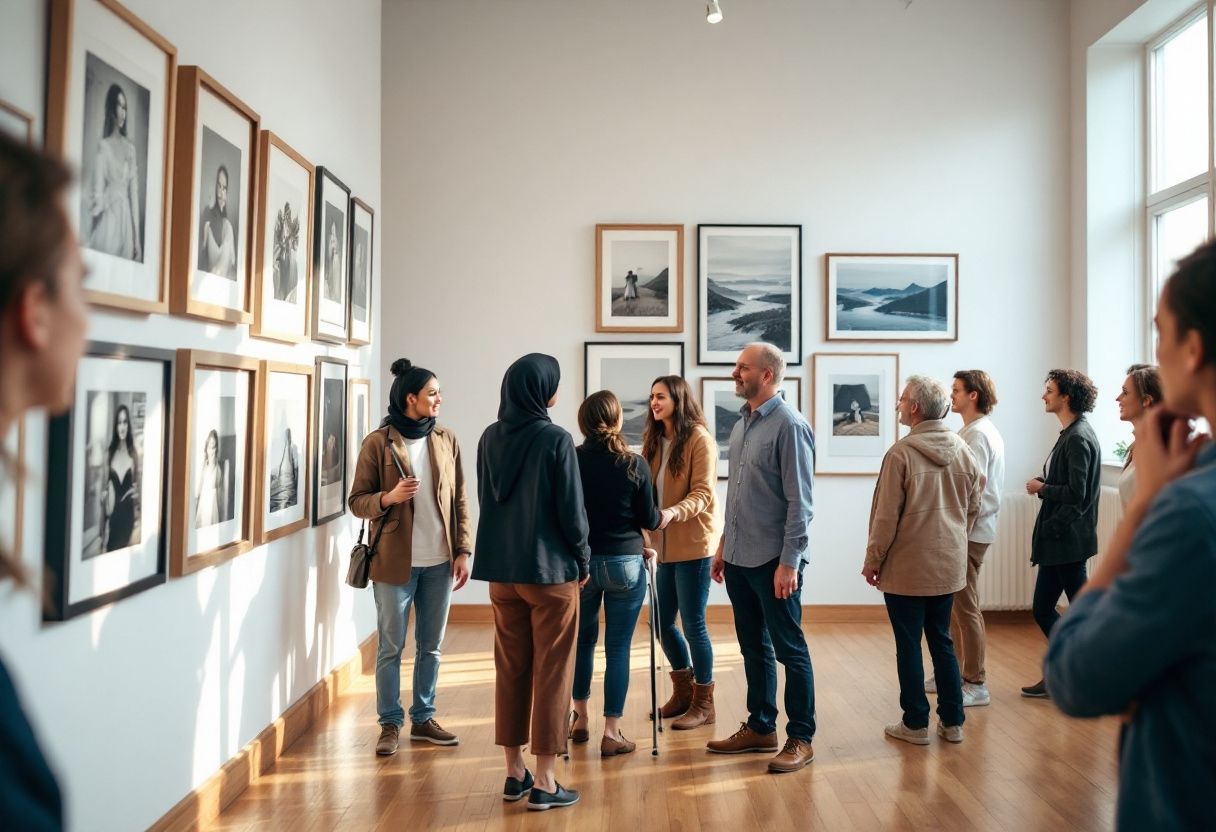
The Importance of Frames in Professional Photography
No matter how perfect your shot is, neglecting its presentation is a missed opportunity. Here's how professional photo frames play a pivotal role:
-
First Impressions Matter: A frame is the first interaction a viewer has with your photo. A carefully selected frame works like the cover of a book: it draws attention without overpowering the content.
-
Enhancing Aesthetic Appeal: The frame adds an extra layer of depth to the image, accentuating crucial elements in the photograph. For instance, a sleek black frame can work beautifully against high-contrast black-and-white projects, while a wood-texture frame can emphasize earthy, natural tones in landscape photography.
-
Protection: Good framing not only showcases your work but also preserves it. A framed print is less likely to be damaged by dust, UV light, and physical wear and tear.
- Dual Purpose: Aesthetics & Functionality: Frames provide both aesthetic enhancement and practical functionality by making a piece "ready-to-hang." Whether it's a canvas print or a framed poster, framing ensures the artwork is instantly display-worthy.
Framing is about more than just aesthetics. When implemented thoughtfully, it protects your work while adding a visual punch that helps draw the viewer's attention. That additional layer of care and detail is what separates a professional photographer from an amateur. Exhibiting your photography in frames that suit both your art and the presentation environment enhances not only your reputation but also the emotional connection your work can foster.
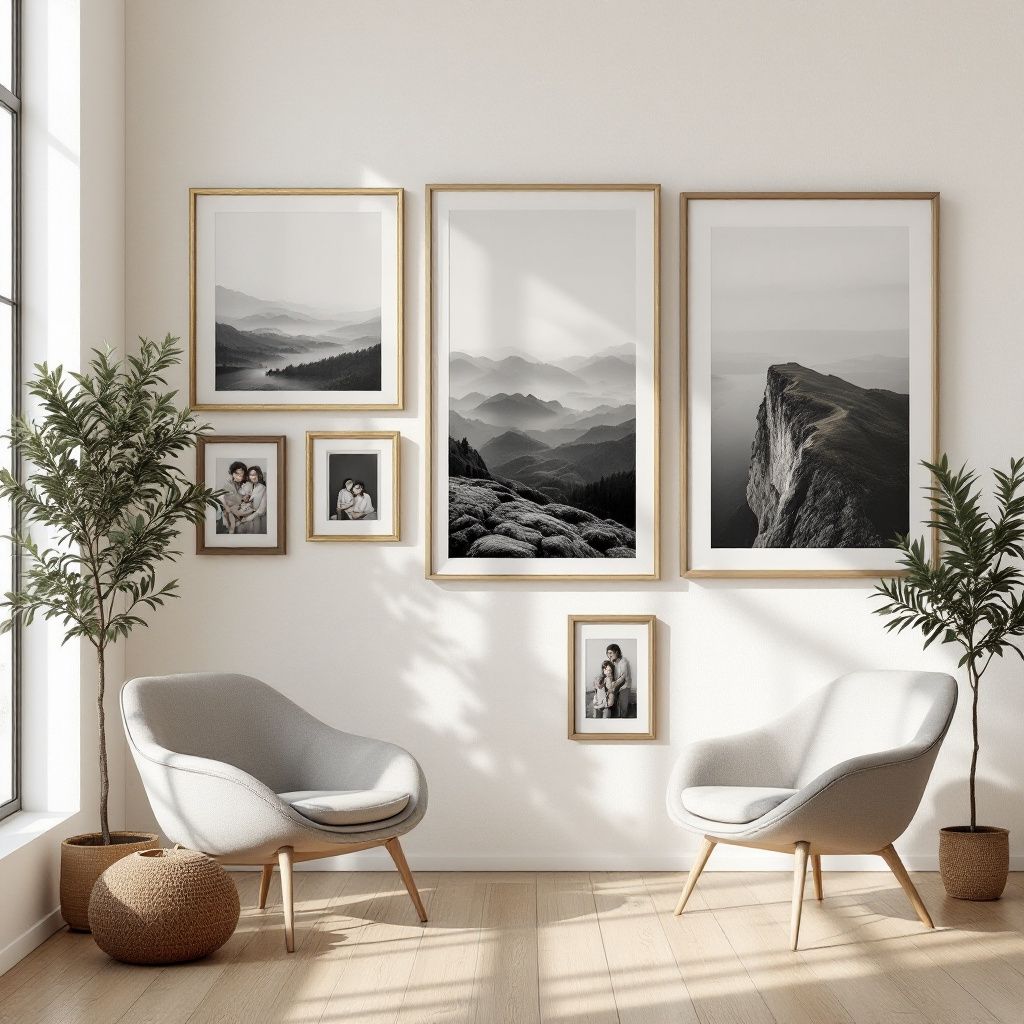
Choosing the Right Type of Frame
When selecting professional photo frames, several factors come into play. It isn’t just about picking something that looks pretty; it’s about finding a frame that complements the photography while also working within the space where it will be displayed.
1. Consider the Style of Photography
Whether it's a landscape, a portrait, or abstract work will heavily influence the type of frame that does the image justice. Here are a few points to consider:
-
Portrait Photography: Individual or family portraits often benefit from something classic—think clean lines or broader frames for a more vintage look. Alternatively, float frames where the photo seems to "hover" within the frame can also modernize a portrait.
-
Landscape Photography: For nature photos or stunning cityscapes, a minimalist frame can help in emphasizing the natural beauty without drawing too much attention away from the core image.
-
Black & White: Black and white photography often goes well with crisp, simple metal frames or blacks, whites, and grays. These typically provide contrast while maintaining a modern, gallery-like finish.
2. Matching the Frame to the Decor
When showcasing photography in spaces that are beautifully curated, the frame shouldn't just elevate the image; it should also complement the surrounding professional decor.
-
Traditional Frames vs. Modern Spaces: If your photo will be hung in a contemporary office lounge or modern apartment, a glossy or metallic frame might mesh well with sleek furnishings and minimalistic decor. On the other hand, rustic wooden frames often blend seamlessly with mid-century or classical themes.
-
Color Considerations: Ensure the frame color doesn't clash with the tone of the room. Neutral shades, such as white, black, or wood-tones, are mostly safe bets in various settings. If you're feeling bold, pick a frame with a color found in your image's background!
3. The Material of the Frame
The materials used to craft professional photo frames can dictate both the frame’s longevity and visual impact.
-
Wood: Classic wood allows for more traditional aesthetics. Whether it’s smooth, rough, coated, or bare, it's hard to go wrong with wood in framing as it can add subtle sophistication to your artwork.
-
Metal & Aluminum: These materials tend to offer more modern vibes. Aluminum frames are durable, lightweight, and often work beautifully with minimalist or avant-garde photography.
-
Acrylic or Glass: For high-end projects or if you’re selling limited edition prints, consider acrylic or museum-grade glass for visual sharpness while offering superior protection from UV rays.
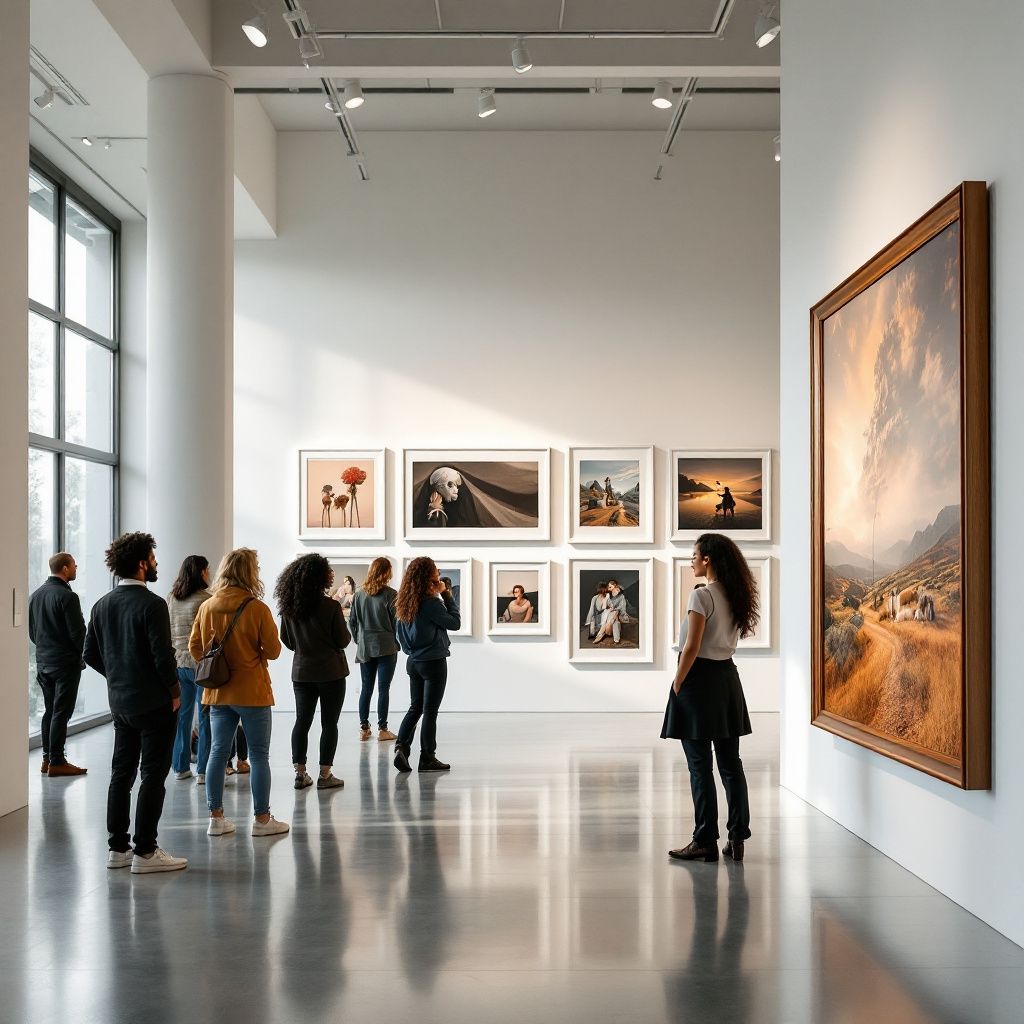
Using Frames For Large Exhibition or Gallery Pieces
When preparing for a gallery exhibition, framing takes on even more significance. Your photography should not only embody technical excellence but also leave a lasting impression on an audience. The right framing can actually amplify that effect.
-
Continuity is crucial when presenting several works as part of a themed collection. Consistency in framing style helps create a cohesive experience that guides the viewer through your narrative. A mismatch may distract, making each piece feel disjointed rather than part of a greater whole.
-
Scale matters—especially with larger pieces. Bigger prints naturally draw attention, but that can be undermined if the frame lacks the sturdiness to match. For oversized photographs, choose frames with a solid build that complements the image's scale. Not only does this enhance the professional quality of your exhibition, but it also ensures your display remains structurally sound, avoiding any "flimsy" perceptions.
-
Proportionality isn’t just aesthetic. A frame should be proportional not only to the image but also the space of the exhibition itself. In rooms where your art will take center stage without much distraction, wide or bold frames can add weight and shift focus, while minimalist frames in smaller, more intimate gallery settings might make the imagery itself stand out more fully.
We at Text To Frame It understand the precision and care required for gallery work. Our frame options, from minimalist confines to rich, deeper wood-textured pieces, can be tailored to your needs within minutes. Simply text your photo to us, and we’ll handle the rest: making sure the work you’ve poured your heart into is professionally presented and ready to shine in any exhibition space.
Framing Soft Vs. Hard Media
Many professional photographers offer both digital prints and physical products such as albums or canvases. For more flexible materials like canvas, specific types of framing can enhance its texture and rich, artistic feel. Here at Text To Frame It, we offer frame options that work across all types of media, allowing you to display your photography in its best light:
-
Canvas with Wood Frame: Our wood-framed canvas prints offer a deeper, "3D" feel that adds dimension to any image. The 1.25" depth creates a gallery-like presence on anyone's wall.
-
Frame for Poster: Framing a poster can take it from amateur to polished instantly. Especially for photographers looking to increase accessibility of their work, this is one of the most cost-effective ways to present your art to a wide audience.
Why Professional Decor Matters
If you're a professional photographer, your work often transcends art to serve a functional role in professional decor. Home decor companies, agencies, and businesses frequently commission framed photos to enhance interior spaces, making your photography both an aesthetic and practical asset.
-
Elevating Spaces With Art: A well-framed photograph has the power to transform any space, from corporate boardrooms to residential interiors. Thoughtfully framed pieces provide not just decoration but also an opportunity to create atmosphere and identity. They serve as touchpoints that add depth, storytelling, and a sense of place to an environment. For example, a framed landscape can bring serenity into a bustling office setting, while a fine portrait may evoke a sense of personal connection in a more intimate space.
-
Corporate Interiors: In professional environments, framed photography adds structure and personality to a space, helping to reinforce the company’s branding, history, or mission. A well-curated art collection isn't just for aesthetics; it can transform the workplace culture. For example, creative agencies often use vibrant, artfully framed images to foster innovation among employees, while more neutral tones in a healthcare environment might be framed to help create a calming atmosphere.
-
Connection to Surroundings: Framed photography can also act as a medium connecting spaces to their geographic, historic, or cultural settings. Selecting the right photograph and presenting it in a high-quality frame can ground a space, making visitors feel more connected to the area or the ethos of the establishment.
When used strategically, framed photos aren't just standalone pieces—they become integral design elements that enhance the feel and flow of a room. Embracing the beauty of presentation with the help of Text To Frame It makes this process quicker and more accessible than ever before, without sacrificing quality. Whether you're outfitting a chic hotel lounge or a modern corporate office, leveraging framed photography can shift the aesthetic and emotional response of a room dramatically.
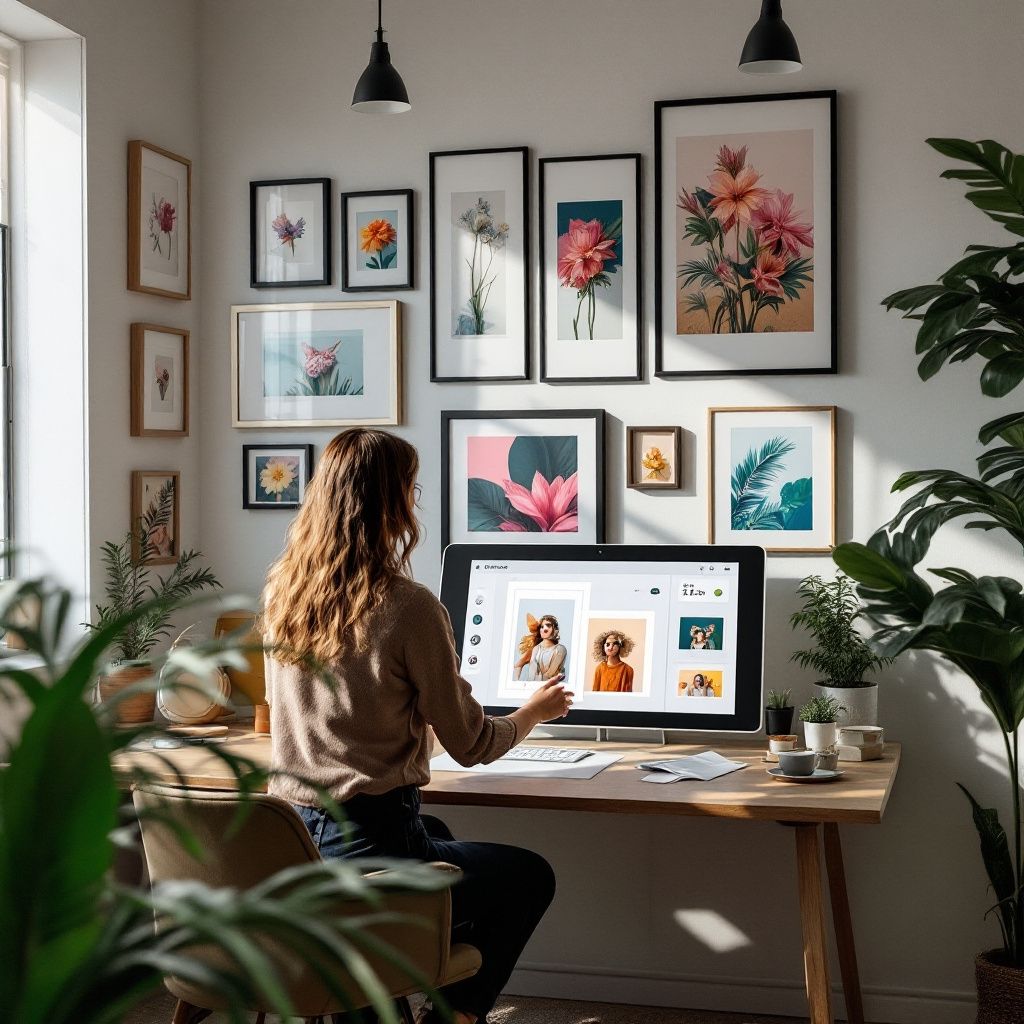
The Future of Framing in Professional Photography
With technology rapidly advancing in both photography and framing, we are moving toward a more streamlined, customizable approach to how we present photographic art. Framing services that integrate modern options like live previews, bespoke AI cropping, and private accessibility links are becoming new standards.
Here at Text To Frame It, we embrace that future. We make it easy to leverage classical skills in framing while blending breakthrough digital tools. In just minutes, you can text any image to our system and receive a ready-to-buy, professional solution. This champion efficiency mirrors what we expect from future professional framing solutions.
Imagine advanced AI cropping your images—cutting out the guesswork of framing adjustments—while private, accessible-only-to-you links bring security and convenience to purchasing your framed photo. Soon, these kinds of innovations will become even more tailored, meeting the specific dimensions and tastes of artists and consumers alike, while keeping sustainability at the forefront.
As photographers push creative boundaries, the way their work is displayed will also evolve. We are already witnessing a shift toward smart systems that adapt to both the physical and digital aspects of photographic art—ensuring those final, framed pieces bring out the full potential of each image.
The future of framing is not just about placing art behind glass or on a canvas; it’s about how technology can heighten the artistic process—making it faster, more accessible, and more impactful.

Conclusion
Professional frames are not just a finishing touch—they are essential to elevating, preserving, and presenting your photography like a pro. Whether you're displaying a single portrait in a home setting or showcasing a full-scale gallery collection, taking care in selecting the right frame—whether wood, metal, acrylic, or custom-fitted canvas—is key.
The whole process, from photography to presentation, counts. When you're ready to elevate your work, certainly don't overlook the powerful contribution professional photo frames can make. Try experimenting with different materials, sizes, and colors, or employ our framing services at Text To Frame It for professional results in no time at all.



